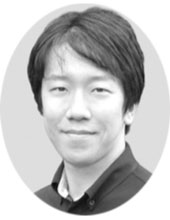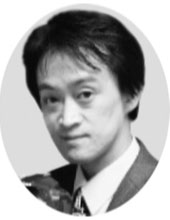Best Paper Award
Simultaneous Reproduction of Reflectance and Transmittance for Ink Paintings
Shigenobu ASADA, Hiroyuki KUBO, Takuya FUNATOMI, Yasuhiro MUKAIGAWA
[Trans. Inf. & Syst. (JPN Edition), Aug. 2016]

Shigenobu ASADA
Hiroyuki KUBO
Takuya FUNATOMI
Yasuhiro MUKAIGAWA
Various digital archiving methods that target historical (ancient) documents have been developed. Most of those methods focus on measuring or scanning the documents of interest in high-resolution, multiple spectrums, multi-angle measurement, etc., and storing the results as digital information. Even though these methods enable collection and storage of highly accurate digitized information from the original documents, the techniques used for reproduction - conventional digital output methods such as computer displays and printers, or special environments in museums using special super-quality displays or other special hardware often combined with VR or AR technologies - fall short of matching the realism of the original documents. In other words, there has not been any way to reproduce realistic replicas of such documents that people can hold with their own hands and see exactly what they look like.
In this paper, the authors have developed a new method for reproducing realistic copies called "photometric replicas" of ink drawings and documents written in ink which can reproduce the reflectance and transmittance of the original materials. First, they measure optical properties of the original document under a controlled environment. Then, they use a multi-layered printout structure that consists of two different layers of inkjet-printed output on tracing paper. To obtain specific reflectance and opacity, they provide a look-up table based on measurement results for gradation patterns printed on each layer with orthogonal direction. However, some original documents cannot be reproduced with this multi-layer printout structure. In that case, scaling of a dynamic range of the original document and adding blank paper(s) between two printed layers can imitate a similar optical property with minimal loss of the actual properties. The authors also examine influences of light diffusion based on the multi-layered structure, evaluate the optical properties of resulting replicas, provide subjective evaluations, and prove the effectiveness and usefulness of their proposed method.
In conclusion, the authors came up with a straightforward solution for effectively reproducing realistic replicas of ink paintings and ink-written documents, thereby opening up a new frontier of applications for digitally archived historical documents. These notable contributions make this paper a strong candidate for the IEICE Best Paper Award.








